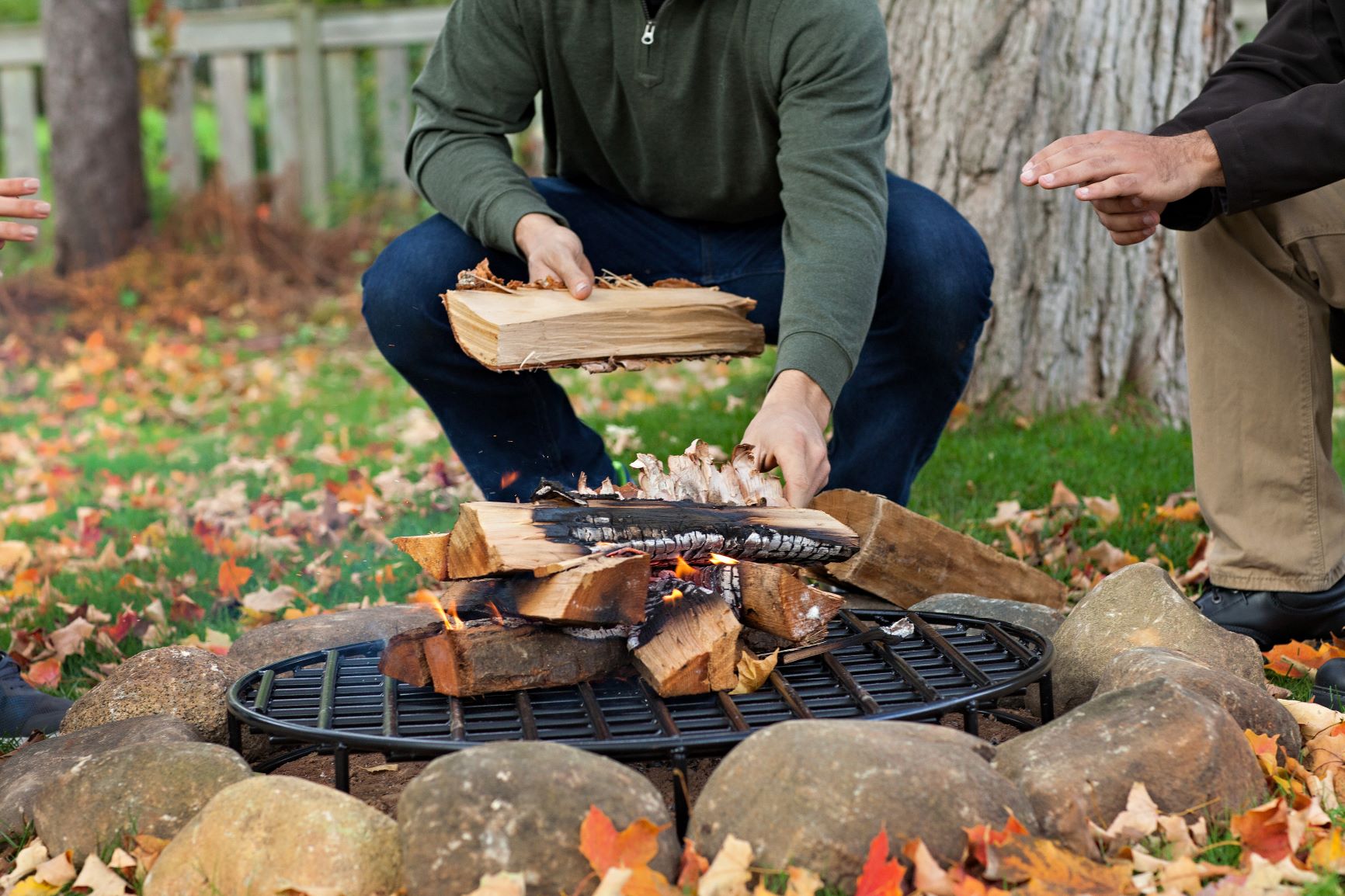How to choose your firewood

When it comes to building a great fire, the type of wood that you use can make a big difference. Accessibility to various types of wood differs by region, but we are here to give you a quick rundown of what you should be looking for when choosing your wood, as well as proper firewood storage techniques.
The type of firewood that is best for you will primarily depend upon whether you are planning on having an indoor or an outdoor fire.
What to look for in indoor firewood
To prevent smoke from wafting throughout your home, you want to choose firewood that burns clean, with minimal ash, and has a high BTU (British Thermal Unit: the amount of heat required to raise the temperature of one pound of water by one degree Fahrenheit).

Best wood for indoor fires: oak, birch, maple, and hickory
What to look for in outdoor firewood
For outdoor fires, BTU and cleanliness is usually not as important to people as the flash and crackle that your fire emits. Easy lighting also becomes a greater priority, as the wood will likely be stored out in the elements.

Best wood for outdoor fires: pine, aspen, birch
How to store your firewood:
Nothing will dampen your bonfire experience like damp wood. For this reason, proper wood storage is just as important as the type of wood that you use if you are looking to enjoy your outdoor fire pit. Here are a few tips to help you keep your wood in prime condition for your next fire:
- Don’t store your wood directly against your house – Storing under an overhang is ideal for protection against rain and snow, but make sure to leave a few inches of space between your firewood and the side of your house. This will allow the wood to breathe and season well, and will help prevent infestations of carpenter ants.
- Stack orderly, but not too tightly – This will allow your wood to breathe and season well. If packed too tightly, your wood will retain condensation and become damp.
- Keep the bottom of your pile off the ground – Elevate the bottom of your pile from the ground to prevent the bottom logs from absorbing condensation due to changes in ground temperature.
- Consider a tarp or lean-to shed – If your fire pit is a significant distance from your house, you may want to consider a tarp or lean-two structure to keep your wood out of the elements.
- A round metal fire pit lid, commonly known as a fire pit snuffer lid, can be a valuable investment as well. Say you have a log that is halfway burnt on your fire, but you want to go to bed. If you were to pour water on that log, you would dampen it and leave it exposed to the elements before your next bonfire. However, by using a snuffer lid, you can extinguish your fire by cutting off its oxygen supply, and easily reignite that log at your next fireside gathering.




Leave a comment
This site is protected by hCaptcha and the hCaptcha Privacy Policy and Terms of Service apply.